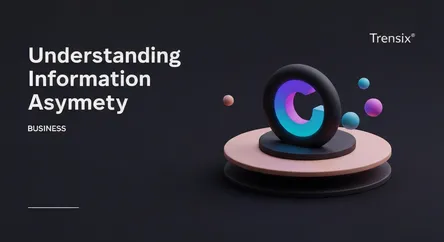Business
Understanding Information Asymmetry

Discover what information asymmetry is, a key economic concept where one party in a transaction has more or better information than the other.
What is it?
Information asymmetry is a core concept in economics where, in a transaction, one party possesses more or superior information than the other. This imbalance creates a power shift and can lead to inefficient market outcomes. The classic example is a used car seller knowing the vehicle's hidden defects while the buyer does not. This concept was famously analyzed by economists George Akerlof, Michael Spence, and Joseph Stiglitz, who shared the Nobel Memorial Prize in Economic Sciences in 2001 for their work on markets with asymmetric information.
Why is it trending?
This concept is perpetually relevant, especially in the digital age. Online marketplaces, financial services, and insurance industries are rife with information asymmetry. Companies often hold vast amounts of data that consumers lack, influencing everything from product pricing to loan approvals. Current discussions around algorithmic transparency, data privacy, and the fairness of the gig economy are fundamentally about mitigating the negative effects of this imbalance. New technologies and regulations are constantly being developed to create a more level playing field for all market participants.
How does it affect people?
Information asymmetry directly impacts daily life and financial decisions. It can lead to two major problems: adverse selection, where poor-quality products or high-risk individuals dominate the market, and moral hazard, where one party takes on more risk because they don't bear the full consequences. For an individual, this might mean overpaying for a faulty product, choosing an unsuitable insurance plan, or making a bad investment. To counteract this, mechanisms like warranties, online reviews, third-party certifications, and government regulations are put in place to reduce the information gap and protect consumers.